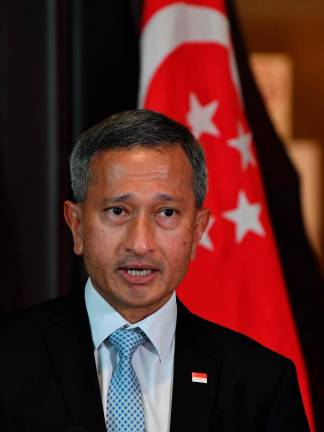PETALING JAYA: The ringgit is expected to outperform other Asian currencies in 2021, due to the Malaysian currency being a proxy for the global reflation trade, its attractive valuations and the rise of the yuan driving the ringgit, according to Standard Chartered head of Asean and South Asia for foreign exchange (FX) research Divya Devesh.
“We have been positive on the ringgit since late 2020 and we think that during 2021 as well the ringgit will outperform the region more broadly. We’re targeting the ringgit at RM3.90 against the US dollar in 2021 and have an overweight recommendation on the currency,” he told a virtual press conference for its 2021 Global Research Briefing today.
Firstly, he said the ringgit tends to outperform during periods of recovery in global trade and global reflation and rising commodity prices should boost Malaysia’s exports.
“Looking at the correlation of Asian currencies (nominal effective exchange rate) versus global trade volumes, you can see that ringgit has the highest correlation to global trade volume across Asia. For a commodity exporter like Malaysia, commodity prices have rallied and some of the commodities that Malaysia exports like CPO and LNG prices have recovered strongly and that should help Malaysia’s exports and should be a bolster for the ringgit.”
Secondly, he said the ringgit offers attractive valuations. The ringgit’s real effective exchange rate (REER) is low even relative to its recent range and the currency is an outlier in the region in terms of FX valuations. Ringgit gains have lagged relative to commodity prices and ringgit also lagged behind other commodity currencies.
“We think the ringgit is still significantly undervalued even at these levels. Using REER as a measure of valuation, it’s 9% undervalued at current levels. Ringgit is the most undervalued currency in Asia at this point. Commodity prices have recovered but even at these levels, the ringgit has not appreciated enough to reflect the improvement in commodity prices,” explained Divya.
Thirdly, he said, US dollar-ringgit has been strongly correlated with US dollar-yuan.
“The correlation of US dollar-yuan versus US dollar-ringgit has increased significantly over the last few years. Essentially, yuan has emerged as an important driver of the ringgit. We’ve a fairly positive view on the renmimbi and to the extend that renminbi performs strongly this year and that opens the door for further ringgit appreciation as well.”
Commenting on rising Covid-19 cases in Malaysia, MCO 2.0 and state of emergency, Divya opined that foreign investors may take a wait-and-see approach, but does not think that this is immediately going to lead to outflows as the technical backdrop for flows remains positive.
“We’re still in an environment where the amount of negative-yielding debt globally is close to US$17 trillion. Against that universe of increasing negative-yielding debt, Malaysia still offers meaningful yield pickup in nominal and real terms. Across Asia, looking at the current inflation versus nominal 10-year yields and their difference, Malaysia offers the highest across the region.”
Standard Chartered chief economist of Asean and South Asia Edward Lee estimates that a one-month nationwide MCO may subtract 1-1.5 percentage points from 2021 gross domestic product (GDP) growth, assuming the impact is 50% less than the first MCO, given a better ability to cope with restrictions.
“This poses a downside risk to our 2021 GDP growth forecast of 7.5%. The impact may be even lower due to first, MCO 2.0 appears to be less restrictive and has not been applied nationwide. Second, the world is not in a synchronised lockdown this time around. Third, the ability to cope with restrictions should mitigate the impact of the MCO. Fourth, stimulus measures have already been implemented and remain largely in place. Lastly, the promise of a vaccine should help limit the downside hit to confidence.”
Lee expects Bank Negara Malaysia to pause on the Overnight Policy Rate given its firmly neutral stance, estimating that it will stay at 1.7% this year.
Lee expects Bank Negara Malaysia to pause on the Overnight Policy Rate













